Best Tensorflow Learning Resources to Buy in December 2025
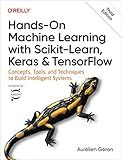
Hands-On Machine Learning with Scikit-Learn, Keras, and TensorFlow


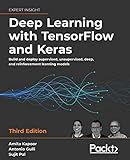
Deep Learning with TensorFlow and Keras: Build and deploy supervised, unsupervised, deep, and reinforcement learning models, 3rd Edition


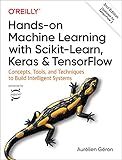
Hands-On Machine Learning with Scikit-Learn, Keras, and TensorFlow: Concepts, Tools, and Techniques to Build Intelligent Systems


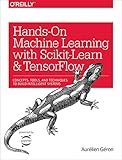
Hands-On Machine Learning with Scikit-Learn and TensorFlow: Concepts, Tools, and Techniques to Build Intelligent Systems


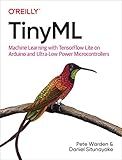
TinyML: Machine Learning with TensorFlow Lite on Arduino and Ultra-Low-Power Microcontrollers


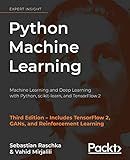
Python Machine Learning: Machine Learning and Deep Learning with Python, scikit-learn, and TensorFlow 2, 3rd Edition



Learning Deep Learning: Theory and Practice of Neural Networks, Computer Vision, Natural Language Processing, and Transformers Using TensorFlow



Understanding Deep Learning: Building Machine Learning Systems with PyTorch and TensorFlow: From Neural Networks (CNN, DNN, GNN, RNN, ANN, LSTM, GAN) to Natural Language Processing (NLP)


In TensorFlow, a tensor is a multi-dimensional array that represents data. These tensors can have different ranks, which correspond to the number of dimensions within the array. For example, a rank-0 tensor is a scalar, a rank-1 tensor is a vector, a rank-2 tensor is a matrix, and so on.
Tensors in TensorFlow can hold various types of data, including integers, floating-point numbers, and strings. They are fundamental to how data is passed and manipulated within TensorFlow computational graphs.
Overall, any multi-dimensional array of data can be considered a tensor in TensorFlow, as long as it follows the guidelines and structures set by the framework.
How to access the elements of a tensor in tensorflow?
You can access the elements of a tensor in TensorFlow using indexing. Here is an example showing how to access the elements of a tensor:
import tensorflow as tf
Create a tensor
tensor = tf.constant([[1, 2, 3], [4, 5, 6]])
Access the element at index [1, 2]
element = tensor[1, 2]
Create a session to run the operations
with tf.Session() as sess: result = sess.run(element) print(result)
In this example, we define a tensor and access the element at index [1, 2] using indexing. When we run the session, the value of the element will be printed.
How to reshape a tensor in tensorflow?
To reshape a tensor in TensorFlow, you can use the tf.reshape() function. This function takes in two arguments: the tensor you want to reshape and the new shape you want to reshape it to.
Here's an example:
import tensorflow as tf
Create a tensor of shape (2, 3)
tensor = tf.constant([[1, 2, 3], [4, 5, 6]])
Reshape the tensor to shape (3, 2)
reshaped_tensor = tf.reshape(tensor, (3, 2))
print(reshaped_tensor)
In this example, we first create a tensor of shape (2, 3) using tf.constant(). Then, we reshape this tensor to a new shape of (3, 2) using tf.reshape(). The reshaped tensor is then printed out.
How to split a tensor in tensorflow?
To split a tensor in TensorFlow, you can use the tf.split function. This function splits a tensor into multiple parts along a specified axis.
Here is an example of how to split a tensor in TensorFlow:
import tensorflow as tf
create a tensor
tensor = tf.constant([[1, 2, 3], [4, 5, 6]])
split the tensor along the first axis into two parts
parts = tf.split(tensor, num_or_size_splits=2, axis=0)
print the two parts
for part in parts: print(part)
In this example, the tf.split function is used to split the tensor tensor into two parts along the first axis. The num_or_size_splits parameter specifies the number of parts to split the tensor into, in this case, 2. The axis parameter specifies the axis along which to split the tensor, in this case, the first axis (axis=0).
You can also specify the sizes of each part by passing a list or tuple of integers to the num_or_size_splits parameter instead of an integer. This allows you to split a tensor into parts of different sizes.
# split the tensor into parts of sizes 1 and 2 along the first axis parts = tf.split(tensor, num_or_size_splits=[1, 2], axis=0)
These examples demonstrate how to split a tensor in TensorFlow using the tf.split function.
